- Register
- Log in to Tune-In
- Wishlist (0)
-
Shopping cart
(0)
You have no items in your shopping cart.
Beatles News
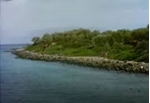
BEATLES legend John Lennon planned to live out his retirement on an Irish island - until disaster struck.
This is Dorninish, a 19-acre island off the coast of Ireland, that was both John Lennon's dream, and a colony for New Age hippies.
"I hope we're a nice old couple living off the coast of Ireland, looking at our scrapbook of madness," Lennon one said, about his future with Yoko Ono.
Had Lennon not been killed in 1980, the legend would have gone through with his plans to turn Dorinish Island into his retirement retreat, according to his lawyer Michael Browne.
Other sources have said that Lennon was absolutely infatuated with the island, but that he wasn't ready to settle into island living and had wanted to wait until his career had slowed.
So he offered it out, free of charge, to the "King of the Hippies".
This was Sid Rawle, the founder of the Digger Action Movement.
Rawle was a New Ager, with an utopian vision of self sufficiency and communal living. He arrived on Dorninish with little more than his grand plans for raising livestock and growing vegetables.
His army of 30 hippies planned to set up a tribal community, where others could come to try an alternativ details

A copy of The Beatles' "White Album" once owned by John Lennon is to go up for auction - with a starting bid of $50,000.
The stereo pressing of the 1968 self-titled double album from The Fab Four bears the serial number 0000006, which proves it once belonged to the former Beatle.
Lennon gifted the album to his chauffeur and bodyguard Les Anthony, who passed the record onto a relative. According to the auction house: "The LP was re-discovered after a television show named Find a Fortune was discussing rare records and the owner contacted the TV program and expressed his interest in selling the album.
"The program then contacted Mike Vandenbosch of More Than Music who purchased the historic piece."
This unique piece of Beatle history has now come up for sale by the Dallas-based Heritage Auctions.
The auction is live now and ends at midday (Central Time) on Saturday 24th February.
The auctioneers say that the album comes complete with the original poster that served as a lyric sheet, the four colour photos of each individual Beatle, and the black inner sleeves that only appeared with early editions of the LP.
They also state that "the jacket cover is in overall VG-EX 6 condit details
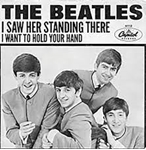
Every generation has it seminal events — for Baby boomers one of them was February 9, 1964, when The Beatles played on the “Ed Sullivan Show.”
That night 73.7 million viewers watched. It was more than 45 percent of all households. Today, only the Super Bowl gets those kinds of numbers.
The Beatles opened the show with “All My Loving”, “Till There Was You” and “She Loves You.” They closed with our Song of the Day, “I Saw Her Standing There” and “I Want to Hold Your Hand.” The Beatles appeared on the show the next two weeks.
Sullivan’s guests rarely got paid. They looked at it as a shot in the arm for their careers.
Sullivan paid for The Beatles’ travel costs and $10,000 (equivalent to $80,000 today). Their appearances ushered in the British Invasion and influenced a generation to buy guitars, grow their hair long, and play music.
Some would become rock stars. Others just drove their parents crazy.
Sullivan’s musical director, Roy Bloch, wasn’t impressed with The Beatles. He made one of the worst predictions ever. He said, “The only thing that’s different is the hair, as details

It’s hard to imagine a time when the Beatles weren’t the most famous band in the world — but in the early 1960s, the four lads from Liverpool were still trying to catch their big break.
So sets the scene for an anecdote from Paul McCartney’s podcast McCartney: A Life in Lyrics, the second season of which begins on Wednesday. In the first episode, the rocker, 81, offers a deep dive on the Beatles’ debut single “Love Me Do,” and recalls the group’s feelings toward stardom in the early days.
“There were all sorts of things, as I say, that you instinctively knew. Don’t try too hard. Don’t work too hard at reaching for it. ‘Cause the more you reach, the more it’ll recede,” he says on the podcast. “Just kid on that you don’t even want it. Something will happen.”
That phrase, “something will happen,” was one that McCartney says the Beatles often turned to, revealing that its origins actually came from when the group got into a minor car crash together and were stranded in a snow bank.
“We always related back to this accident we’d had on the motorway going up from London up
details

A George Harrison song that wasn’t a huge hit became influential. George’s song was commercially overshadowed by USA for Africa’s “We Are the World.”
George Harrison was not one of the artists featured on USA for Africa’s mega single “We Are the World.” Despite that, he paved the way for the song with his own music and actions. Here’s a look at a time when he took an influential moral stand.
'Killing It' Stars Rell Battle and Craig Robinson Tease Season
In 1971, George released the song “Bangla Desh” to raise money for the victims and survivors of the Bangladesh Liberation War and the ensuing genocide. He used a pair of concerts called The Concert for Bangladesh to raise funds for the same causes. Financial Times reports “Bangla Desh” was the first charity single. Since the idea of a charity single is so simple, it’s surprising no one had released one before the 1970s.
“Bangla Desh” was far from the last song of its kind. The genre came into full force in the 1980s with the release of Band Aid’s “Do They Know It’s Christmas?” and USA for Africa’s “We Are the World.&r details
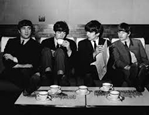
John Lennon quit The Beatles in 1969. That year, the band recorded an album that Lennon did not particularly like.
After The Beatles broke up, John Lennon frequently spoke critically about the work he made with the band. He said he didn’t consider himself a fan of The Beatles and complained about his bandmates. He had harbored negative feelings about the band while they were still together. According to longtime Beatles producer George Martin, Lennon was visibly fed up while recording one of the band’s final albums.
While Let It Be was the last album The Beatles released, they recorded it before Abbey Road. They recorded it in 1969, the same year Lennon announced he was leaving the band. According to Martin, Lennon’s fatigue with the group came through while recording Abbey Road.
“John got disenchanted with record production. He didn’t really approve of what I’d done or was doing,” Martin said in The Beatles Anthology. “He didn’t like ‘messing about’, as he called it, and he didn’t like the pretentiousness, if you like. I could see his point. He wanted good, old-fashioned, plain solid rock: ‘The hell with it — let’s details

Sometimes less is more.
At least that’s the thought behind Paul McCartney and Wings’ “Band on the Run (Underdubbed).”
Fifty years after its debut, the beloved album gets yet another rerelease, this time with a version that doesn’t include bonus tracks but instead pulls back some of the layers that were added after the original rough mixes. Hence, “underdubbed” in the title.
This isn’t the first time McCartney has revisited an album to strip off some of the bells and whistles to get closer to the original recording. He did it with the unfortunately titled “Let It Be Naked” back in 2003.
The “underdubbed” version of “Band on the Run” is notable for a slightly different song order from the U.S. release that will be jarring for those with the original sequencing committed to memory after decades of listening. The new order mirrors how the original tapes were discovered in McCartney’s archives and omits “Helen Wheels,” which McCartney didn’t intend to include on the album but did after it was a hit single.
Some of the changes with the songs themselves are subtle: a missing guitar riff or ec details

Ringo Starr posted a video update on his social media pages in which he unveiled new details about two recording projects on which he’s been working.
Last year, the former Beatles drummer announced during a Zoom Q&A with multiple media outlets that he was working on a country music EP with producer T Bone Burnett, and also was collaborating with producer and songwriter Linda Perry on another EP.
At the start of the update clip, the former Beatles drummer reported, “I’m still in the studio, and you know what’s happening? I was gonna do a … country EP, but as things are unfolding, it’s probably going to be like a real CD, 10 tracks. Can you believe it? I haven’t done one of them in a long time. So that’s getting made ready.”
He then shared some info about his collaborative EP with Perry, which is a four-track collection titled Crooked Boy.
“She wrote the songs for me. She produced them. She’s a beauty, so musical,” Starr said. “She has a great vibe. Peace and love, Linda.”
The video also displayed the Crooked Boy EP’s packaging, revealing that the songs are titled “Gonna Need Someone,” &ldqu
details

Grammy-winner Jeff Tyzik’s new arrangements, transcribed and arranged from the original master recordings at Abbey Road, interface with candid photos of the band, taken from the archives of the official fan magazine, “The Beatles Book Monthly,” for “a magical musical and visual journey.”
“Twenty-five of The Beatles’ best-known songs (“Here Comes the Sun,” “Hey Jude,” “All You Need Is Love,” etc.) in orchestra-augmented arrangements while avoiding the tribute-band route,” cites the online note from Schirmer Theatrical, LLC, and Greenberg Artists. “The Beatles were ostensibly four guys singing about girls, and what we wanted to do in this project was to authentically and creatively embody the music.”
"The production comes with all orchestral arrangements, six musicians, and two technical crew members (video and sound),” informs the note.
Revolution is a stunning multimedia experience featuring new symphonic arrangements transcribed from the original master recordings at Abbey Road. Accompanied by hundreds of rare and unseen photos along with stunning video and animation,
ISO’s stage crew and details
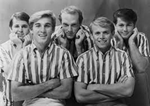
The Beach Boys' Mike Love decided to pay tribute to The Beatles' George Harrison through song. Love explained why he respected the "My Sweet Lord" singer.
Some of the best Beatles tribute songs came from unexpected places. The Beach Boys’ Mike Love decided to pay tribute to The Beatles’ George Harrison through song. Love explained why he had had so much respect for the “Got My Mind Set on You” singer. He also compared the way audiences reacted to his band and The Beatles during the 1960s.
During a 2023 interview with Forbes, Love said his song “Pisces Brothers” is a tribute to George. Love felt that the two of them were “pieces brothers” because of their shared astrological sign. Love released the tune in honor of what would have been George’s 71st birthday in 2014. The Beach Boy revealed that “Pisces Brothers” is one of Love’s favorite tunes to perform and one of his favorite tunes in general.
“It’s a poem that I put to music,” Love explained. And I love doing it every night. It just takes me back to those times, you know. There’s very few songs touch me as emotionally as that, although the ‘Warmth of t details

John Lennon said a song from The Beatles' 'The White Album' has some social commentary. It’s not one of the more popular songs on the record.
John Lennon said a song from The Beatles’ The White Album has some social commentary. It’s also supposed to be a joke. Is it a funny joke? Well, that’s a dicey question to look at all these years later.
The book All We Are Saying: The Last Major Interview with John Lennon and Yoko Ono features an interview from 1980. In it, John was asked about “The Continuing Story of Bungalow Bill.”
“Oh, that was written about a guy in Maharishi’s meditation camp who took a short break to go shoot a few poor tigers, and then came back to commune with God,” John recalled.
“There used to be a character called Jungle Jim and I combined him with Buffalo Bill. It’s a sort of teenage social-comment song and a bit of a joke. Yoko’s on that one, I believe, singing along.”
If nothing else, “The Continuing Story of Bungalow Bill” paved the way for future musical collaborations between John and Yoko.
‘The Continuing Story of Bungalow Bill’ isn’t as beloved as a details

John Lennon's approach to a Beatles song makes it feel like it's from Narnia. The tune was a hit twice.
C.S. Lewis’ Narnia books and The Beatles’ songs are two of post-war England’s most valuable cultural exports. Paul McCartney said one of The Beatles’ songs is about a place that John Lennon felt was similar to Narnia. John did an incredible job of translating his feelings into music.
In the 1997 book Paul McCartney: Many Years From Now, Paul discussed Strawberry Field, the orphanage that inspired The Beatles’ “Strawberry Fields Forever.” “I’ve seen Strawberry Fields described as a dull, grimy place next door to him that John imagined to be a beautiful place, but in the summer it wasn’t dull and grimy at all: it was a secret garden,” Paul recalled.
“John’s memory of it wasn’t to do with the fact that it was a Salvation Army home; that was up at the house,” he added. “There was a wall you could bunk over and it was a rather wild garden, it wasn’t manicured at all, so it was easy to hide in. The bit he went into was a secret garden like in The Lion, the Witch and the Wardrobe and he thought of it like tha details
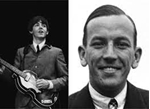
The Beatles refused to meet with someone who publicly insulted them. After a bit of pressure, though, Paul McCartney met with their critic.
In 1965, Paul McCartney was the only member of The Beatles to meet with esteemed playwright and composer Noel Coward. At this point, the band had grown used to politely greeting complete strangers, even when they were tired or irritable. They refused to meet with Coward, though. Here’s why McCartney was the only one to speak to Coward.
The Beatles were the biggest band in the world by the mid-1960s, but even they had their detractors. One of their critics was Coward, who described them as “totally devoid of talent. There is a great deal of noise. In my day, the young were taught to be seen but not heard” (per the Daily Mail).
Coward’s friend was a journalist for the Daily Mail and published his remarks. One year later, Coward saw The Beatles perform in Rome and described the concert as “just one long ear-splitting din.” Still, he felt he should congratulate the band after the concert. He met them at their hotel, where their manager, Brian Epstein, informed him that the band didn’t want to speak to him. They’d read his c details

The celebration is finally here — 60 years of Beatlemania! Or, more precisely, six decades since The Beatles conquered America, arriving on February 7, 1964, appearing to tremendous success on The Ed Sullivan Show two days later and being a part of our lives ever since.
Were you there? Did you scream when you saw them perform, or cut your hair to resemble their moptops? Maybe you heard the stories from your parents, watched the footage and have certainly heard the music. Whatever it was, you’ve undoubtedly felt the magic generated by the combination of John Lennon, Paul McCartney, George Harrison and Ringo Starr.
Their history is truly amazing and still going strong — from “I Want to Hold Your Hand” to last year’s “Now and Then” — but if you had to pick one year that truly captured Beatlemania in all its glory, it would have to be 1964.
In celebration of 60 years of Beatlemania, we’re taking a look back at 10 Fab highlights of 1964.
1. ‘I Want to Hold Your Hand’/Meet the Beatles
60 years of Beatlemania really kicked off with the fact that The Beatles’ first single in America, “I Want to Hold Your Hand” details
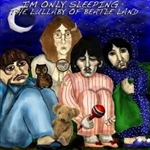
The Beatles won the Best Music Video award at the 2024 Grammys Sunday night for the track “I’m Only Sleeping” — a song which was first released all the way back in 1966.
The song’s music video beat out other notable nominees such as Billie Eilish’s “What Was I Made For” and Kendrick Lamar’s “Count Me Out,” as mentioned on the Grammys website.
After many decades, a music video was then directed by artist Em Cooper and launched to The Beatles’ YouTube channel in November 2022. The video, according to The Beatles’ website, took over 1,300 individual oil paintings to create the “visual exploration of the space between dreaming and wakefulness.”
The last time The Beatles won any Grammy award, according to the Grammys website, was for the 1996 event, where they received three awards for various categories.
Despite the win, the living band members will not receive the award. As reported by Forbes, the award will actually go to the directors and producers of the music video because The Beatles, themselves, were not involved with the project.
Source: Paul Hoskin/deseret.com
